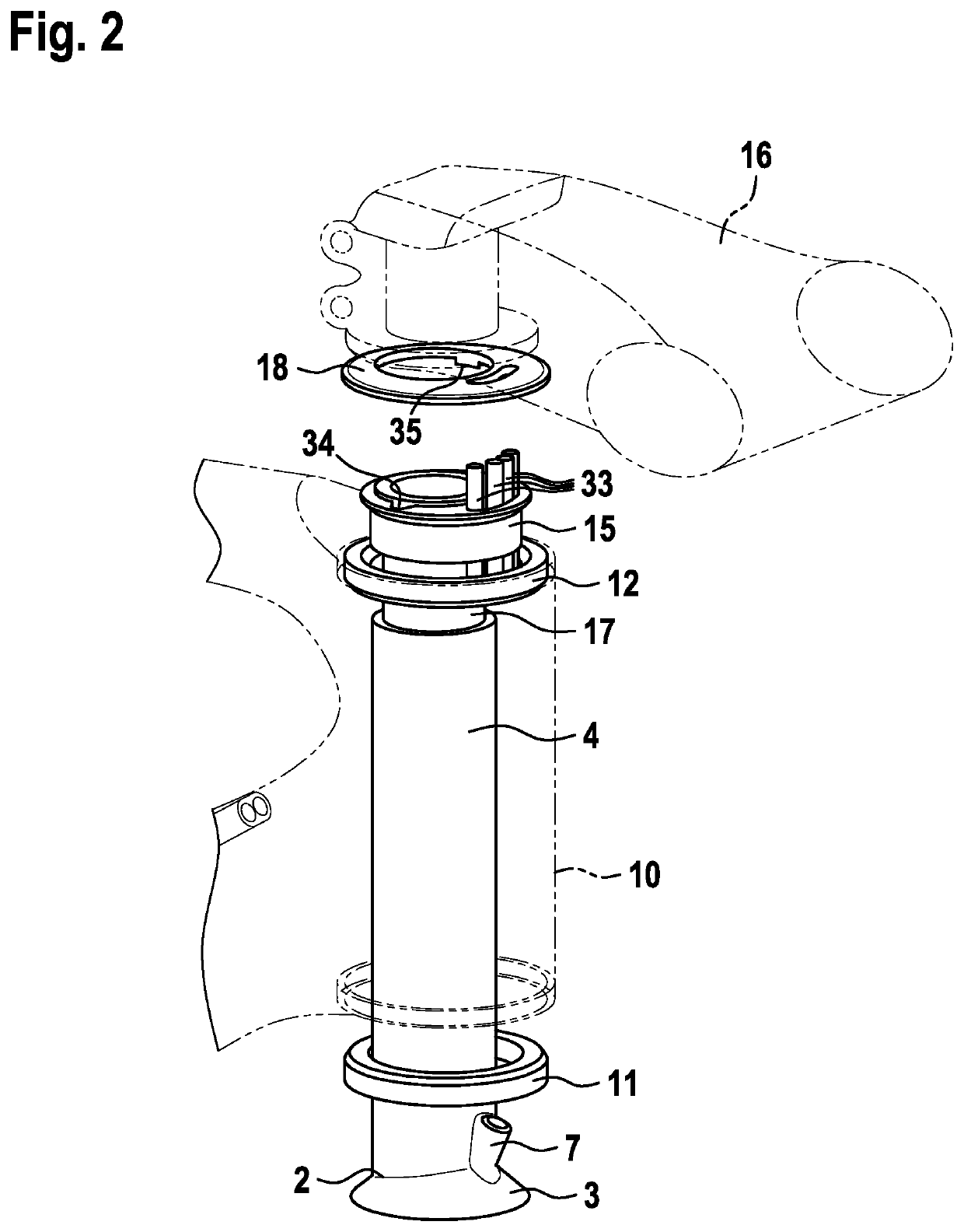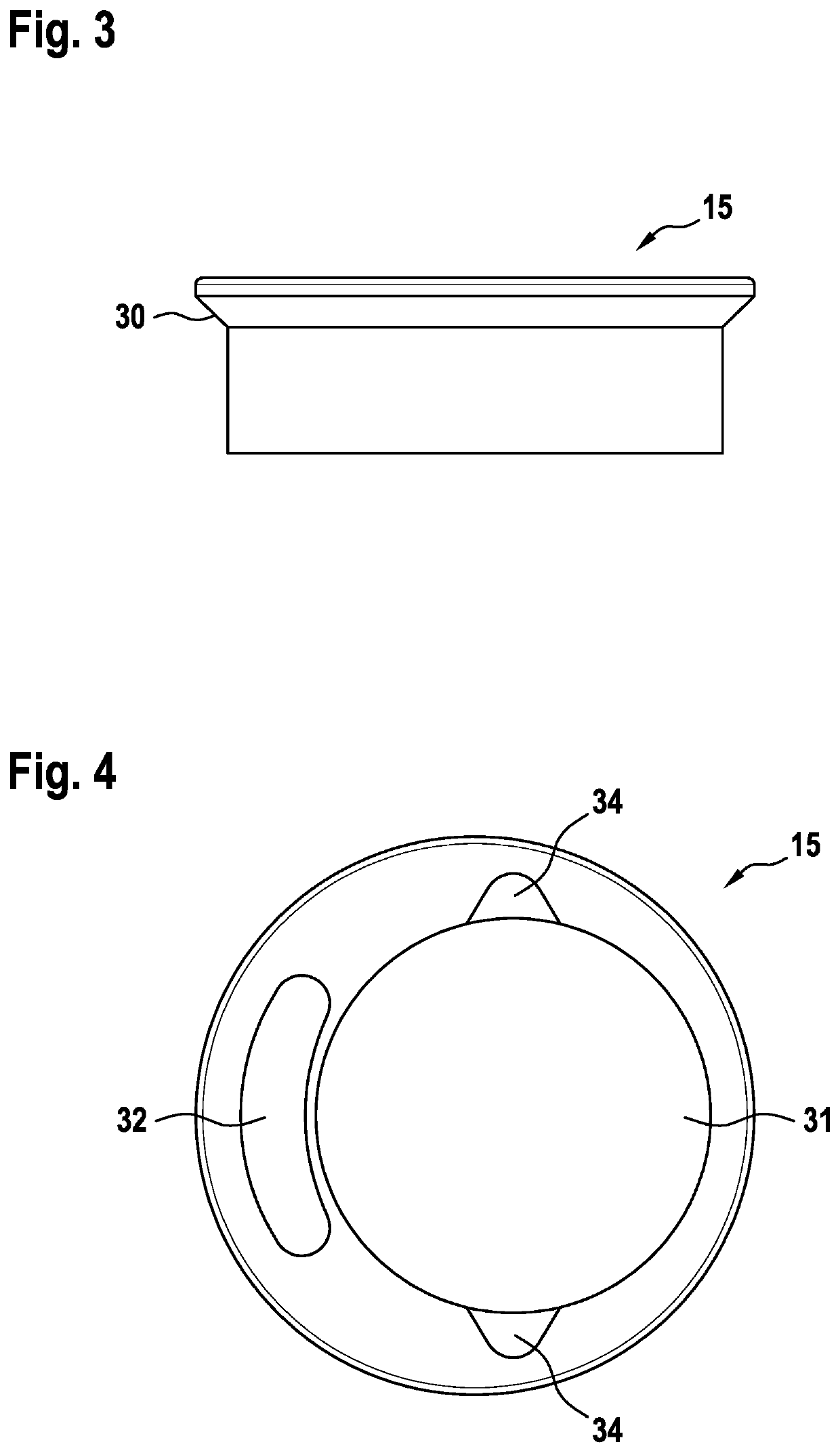Eccentric bicycle fork shaft
a bicycle and bending technology, applied in the field of bicycle forks, can solve the problems of reduced mechanical stability reduced bending stiffness, and inability to guide the mechanical gear shift cable in an entirely integrated (internalized) manner, and achieves a high degree of flexibility and high bending stiffness of the fork sha
- Summary
- Abstract
- Description
- Claims
- Application Information
AI Technical Summary
Benefits of technology
Problems solved by technology
Method used
Image
Examples
embodiment 1
[0052]2. The bicycle fork (1) , characterized in that the cylindrical fork shaft segment (4) forms the uppermost segment and / or the upper end of the fork shaft (2).
[0053]3. The bicycle fork (1) according to embodiment 1 or 2, characterized in that the cylindrical fork shaft segment (4) has a fork shaft axis (6) that extends within a symmetry plane of the bicycle fork and / or extends parallel to the steering axis (5), is spaced apart from the steering axis and is offset with respect to the steering axis in a direction of eccentricity by an eccentric distance (e), preferably by 1 to 5 mm, particularly preferably by 3 mm, wherein the direction of eccentricity preferably points opposite to the direction of travel.
[0054]4. The bicycle fork (1) according to any of the preceding embodiments, characterized in that the cylindrical fork shaft segment (4) has a hollow interior with a cylindrical inner side.
[0055]5. The bicycle fork (1) according to any of the preceding embodiments, characterize...
embodiment 5
[0056]6. The bicycle fork (1) , characterized in that the cone of the tapered fork shaft segment has a circular outer cross section in a plane perpendicular to the steering axis (5) and / or to the fork shaft axis (6), the circle center point of said circular outer cross section coinciding with the steering axis.
[0057]7. The bicycle fork (1) according to any of the preceding embodiments, characterized in that, along the fork shaft axis and / or steering axis (5, 6), the height of the fork shaft (2) amounts to 100 to 400 mm and / or the height of the engaging segment (3) amounts to 3 to 10 mm, preferably 5 mm, and / or the height of the cylindrical fork shaft segment (4) amounts to 90 to 397 mm.
[0058]8. The bicycle fork (1) according to any of the preceding embodiments, characterized in that the fork shaft (2) consists of the engaging segment (3), the cylindrical fork shaft segment (4) and preferably a feed-through opening (7) for the brake cable of the front wheel brake.
[0059]9. The bicycle...
embodiment 12
[0063]13. The bicycle frame , characterized in that the cylindrical fork shaft segment (4) has a smaller outer diameter than the inside measurement of the upper headset bearing (12).
[0064]14. The bicycle frame according to embodiment 12 or 13, characterized in that the cylindrical fork shaft segment (4) extends through the upper headset bearing (12).
[0065]15. The bicycle frame according to any of embodiments 12 to 14, further comprising a reduction sleeve (15) that engages on the cylindrical fork shaft segment (4) and the upper headset bearing (12).
PUM
 Login to View More
Login to View More Abstract
Description
Claims
Application Information
 Login to View More
Login to View More - R&D
- Intellectual Property
- Life Sciences
- Materials
- Tech Scout
- Unparalleled Data Quality
- Higher Quality Content
- 60% Fewer Hallucinations
Browse by: Latest US Patents, China's latest patents, Technical Efficacy Thesaurus, Application Domain, Technology Topic, Popular Technical Reports.
© 2025 PatSnap. All rights reserved.Legal|Privacy policy|Modern Slavery Act Transparency Statement|Sitemap|About US| Contact US: help@patsnap.com



